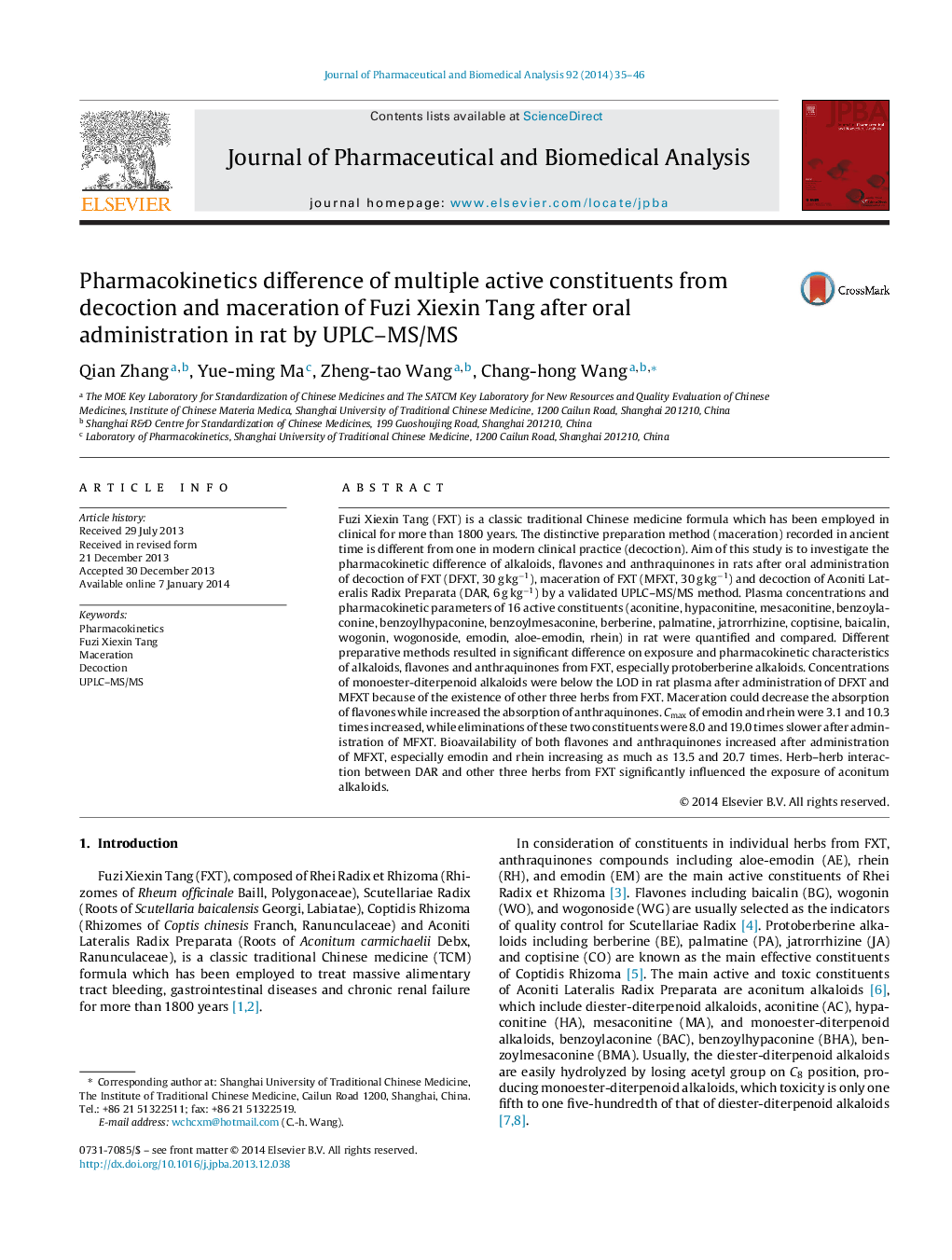| کد مقاله | کد نشریه | سال انتشار | مقاله انگلیسی | نسخه تمام متن |
|---|---|---|---|---|
| 1221758 | 1494643 | 2014 | 12 صفحه PDF | دانلود رایگان |

• Sixteen multiple active constituents of FXT were determined by UPLC–MS/MS in rat plasma.
• Alkaloids, flavones and anthraquinones are the main constituents absorbed in blood.
• Different preparation can lead to dissimilar ingredients in decoction/maceration.
• Pharmacokinetic characterastics of compound in FXT is affected by preparation method.
• Herb–herb interaction could be seen among traditional Chinese medicine of FXT.
Fuzi Xiexin Tang (FXT) is a classic traditional Chinese medicine formula which has been employed in clinical for more than 1800 years. The distinctive preparation method (maceration) recorded in ancient time is different from one in modern clinical practice (decoction). Aim of this study is to investigate the pharmacokinetic difference of alkaloids, flavones and anthraquinones in rats after oral administration of decoction of FXT (DFXT, 30 g kg−1), maceration of FXT (MFXT, 30 g kg−1) and decoction of Aconiti Lateralis Radix Preparata (DAR, 6 g kg−1) by a validated UPLC–MS/MS method. Plasma concentrations and pharmacokinetic parameters of 16 active constituents (aconitine, hypaconitine, mesaconitine, benzoylaconine, benzoylhypaconine, benzoylmesaconine, berberine, palmatine, jatrorrhizine, coptisine, baicalin, wogonin, wogonoside, emodin, aloe-emodin, rhein) in rat were quantified and compared. Different preparative methods resulted in significant difference on exposure and pharmacokinetic characteristics of alkaloids, flavones and anthraquinones from FXT, especially protoberberine alkaloids. Concentrations of monoester-diterpenoid alkaloids were below the LOD in rat plasma after administration of DFXT and MFXT because of the existence of other three herbs from FXT. Maceration could decrease the absorption of flavones while increased the absorption of anthraquinones. Cmax of emodin and rhein were 3.1 and 10.3 times increased, while eliminations of these two constituents were 8.0 and 19.0 times slower after administration of MFXT. Bioavailability of both flavones and anthraquinones increased after administration of MFXT, especially emodin and rhein increasing as much as 13.5 and 20.7 times. Herb–herb interaction between DAR and other three herbs from FXT significantly influenced the exposure of aconitum alkaloids.
Figure optionsDownload as PowerPoint slide
Journal: Journal of Pharmaceutical and Biomedical Analysis - Volume 92, 15 April 2014, Pages 35–46